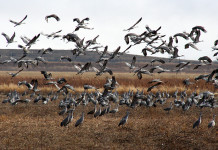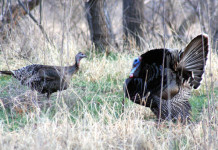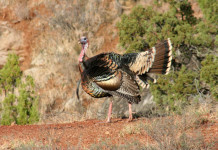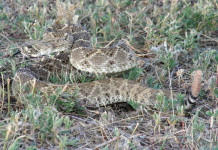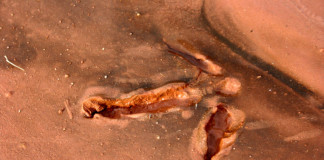The Texas deer hunting forecast can almost always be summed as being good, no matter what curve balls Mother Nature has thrown at the whitetail population. The Lone Star State is blessed with the highest whitetail figure in the country, offering hunters both quantity and quality, no matter where you may be pursuing bucks and does.
Here is a hunting forecast for Texas’ most sought-after target — the white-tailed deer — and other notable updates for upcoming fall and winter hunting seasons for other species.
Blaise Korzekwa, White-Tailed Deer Program Leader for the Texas Parks and Wildlife Department, is tasked with helping to oversee the crown jewel of hunting species, along with a host of biologists who put in time throughout the year working with landowners and hunters. Korzekwa said things are looking up in many ways for 2024-25 frameworks.
“Aside from portions of the Edwards Plateau and southwest Texas, the rest of the state should expect above-average fawn recruitment and antler production this season,” Korzekwa noted. “Historical statewide fawn recruitment will produce a good number of middle-age and mature bucks this season. Given that over half of the state experienced good habitat conditions this spring, hunters in these areas will have a great opportunity at harvesting a quality buck this season.
“Overall, the Texas deer population is a robust 4.7 million white-tailed deer but is still rebounding from the severe drought conditions from two years ago. Those drought conditions produced a 2022 fawn crop of only 28%, which rivals the 29% observed after the 2011 drought. Drought-quenching rain in spring of 2023 led to a 10-year high fawn recruitment of 44% last season and this summer’s projected fawn crop should help boost the population. The five-year average statewide fawn recruitment is 38%.”
Korzekwa is quick to point out that hunters should keep in mind white-tailed deer density estimates, adult sex ratio, buck age structure, average antler quality and harvest rates vary dramatically depending on the ecoregion of the state they’re hunting.
“The Edwards Plateau, commonly called the Hill Country, has the highest deer population in the state with an estimate of 1,514,387 deer,” Korzekwa noted. “Severe drought conditions in this ecoregion over the last few years has lowered the population around 25%, but it still holds the highest density of deer in the state. Within the Edwards Plateau, there are six deer management units with densities ranging from 26 deer per 1,000 acres to 155 deer per 1,000 acres. The area around Llano and Mason counties (DMU 6) has the highest density in the region, with an estimated 413,600 deer in this DMU alone.
“Within the Edwards Plateau ecoregion, hunters should expect an increase in the number of bucks in the 3.5- to 5.5-year-old age class because of improved fawn recruitment from 2019 to 2021. Below-average fawn crops in 2017 and 2018 will keep the quantity of mature bucks lower than hoped for, but there should be a good number of 5.5-year-old deer offering opportunities at harvesting a mature buck.”
Korzekwa noted another whitetail hotbed again should be a solid place to hunt, for obvious reasons.
“For hunters seeking a once-in-a-lifetime trophy, South Texas is often regarded as the premier big buck destination (in the country),” Korzekwa said. “Three deer management units are represented in South Texas and deer densities range from 24 deer per 1,000 acres to 52 deer per 1,000 acres. Estimates show a population of nearly 605,000 white-tailed deer and has been slowly growing over the last several years.
“The 3.5- to 4.5-year-old age classes will be abundant and offer plenty of mature bucks in the coming years. Many ranches in the region manage for older age class bucks and the 5.5 to 6.5 age class should be well-represented. Bucks 4.5 or older represented 64% of the buck harvest in 2023, much higher than the five-year average of 56%, and was the greatest percentage of mature buck harvest in the state last season.”
Central Texas, Korzekwa said, also is another bastion for quantity, and perhaps quality, in a season like this.
“Compared to earlier surveys in 2005, population trends in the Cross Timbers indicate significant growth in all DMUs since then,” Korzekwa noted. “Recently, harvest rates have significantly increased in the ecoregion, but population growth has remained relatively stable in the ecoregion due to fawn crops averaging 46% over the last five years. Because of the relatively consistent fawn production, buck age structure is generally well distributed across all age classes. However, hunters will likely see fewer 2.5-year-old bucks this year due to poor fawn recruitment in 2022, but every other age class will be well-represented. Hunters focusing on mature bucks should not be disappointed with the upcoming season.”
Two other areas – the Post Oak Savannah and Pineywoods – are also looking stellar for hunters, especially those looking to fill tags.
“Estimated deer densities in the Post Oak Savannah ecoregion range from 25 to 64 deer per 1,000 acres,” Korzekwa said. “Five deer management units are represented in the Post Oak region and the highest deer populations can be found in the southern part of the region (DMU 11 and 12), generally anywhere along the Interstate 10 corridor from San Antonio to Houston. Most recent estimates for DMU 11 indicate a density of 64 deer per 1,000 acres. Age and antler surveys indicate that 39% of the buck harvest was represented by bucks 4.5 years or older in 2023. There should be a good crop of bucks in the 4.5+ year-old age classes based on previous fawn crops.
“In the Pineywoods, the most recent survey data estimated the deer population at 331,522, which is right in line with the previous three years. Among the five DMUs represented in this region, deer density estimates range from a low of 4.6 deer per 1,000 acres in DMU 13, the area between Houston and Beaumont, to a high of 31.8 deer per 1,000 acres in DMU 17 around the Tyler area. Properties that manage for quality deer habitat often see much higher deer densities, with some localized areas exceeding 40 to 50 deer per 1,000 acres.
“Based on previous fawn production, hunters should expect a decent cohort of 4.5- and 5.5-year-old bucks, but below-average cohort of 2.5- and 3.5-year-old bucks. Buck harvest from 2023 indicates that 51% of the harvested bucks are 3.5 years old or older and 24% are 4.5 years old or older, a byproduct of the antler restriction regulation and hunters being more aware of the antler potential of older bucks.”
Korzekwa said another area of the state shouldn’t be overlooked, especially for big bucks that don’t have as much competition.
“The Eastern and Western Rolling Plains ecoregions generally have lower deer populations compared to other ecoregions, with deer densities ranging from 30 to 48 deer per 1,000 acres in the Eastern Rolling Plains and 18 to 25 deer per 1,000 acres in the Western Rolling Plains,” Korzekwa said. “Sporadic fawn production the last several years may create age gaps in some of the middle and mature age classes, but 5.5-year-old buck numbers will remain steady. In 2023, 61% of the buck harvest in the Western Rolling Plains was represented by bucks 4.5 or older, the second-highest in the state.
“In the Eastern Rolling Plains, bucks 4.5 or older represented 53% of the harvest in 2023, which is the highest on record for this ecoregion. Both Rolling Plains ecoregions have been a hotbed for mature buck harvest, with both of them in the top four ecoregions for mature buck harvest, and 2024 is expected to be another great season.”
Korzekwa noted that this fall and winter could again be a deer season for the books for many hunters.
“As hunters have become more knowledgeable on deer management over the decades, mature buck harvest has drastically increased from only 21% of harvested bucks being 4.5 years old or older in 2005, to a record 53% last season,” Korzekwa noted. “Whether you’re looking to fill the freezer with venison or harvest the trophy of a lifetime, it will be time well spent.”
Texas White-Tailed Deer Boone & Crockett Scores by Ecoregion
Table 1. Nineteen-year average estimated Gross Boone & Crockett scores by ecoregion based on TPWD age and antler survey data collect each hunting season (2005-2023).
| Ecological Region | 3.5 Age Group | 4.5 Age Group | 5.5+ Age Group |
| Blackland Prairie | 116 6/8 | 127 6/8 | 130 7/8 |
| Cross Timbers | 111 6/8 | 122 3/8 | 126 6/8 |
| Eastern Rolling Plains | 112 4/8 | 121 7/8 | 128 6/8 |
| Edwards Plateau | 99 2/8 | 110 6/8 | 118 1/8 |
| Pineywoods | 112 3/8 | 123 4/8 | 126 3/8 |
| Post Oak Savannah | 112 2/8 | 121 2/8 | 123 7/8 |
| South Texas Plains | 107 7/8 | 123 3/8 | 131 5/8 |
| Western Rolling Plains | 113 1/8 | 124 4/8 | 133 4/8 |
| Statewide | 108 7/8 | 118 6/8 | 124 |
Notable changes to 2024-25 Texas deer hunting frameworks:
- For properties enrolled in the Harvest Option of the Managed Lands Deer Program, allow youth to harvest bucks with a firearm for the same days that correspond to the early youth-only season for county regulations.
- Expand doe days in 43 counties in the Post Oak Savannah and Pineywoods ecoregions to better manage white-tailed deer populations.




